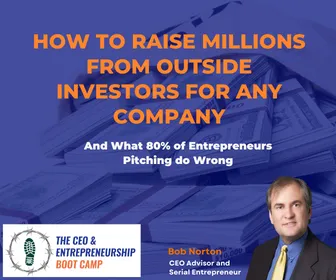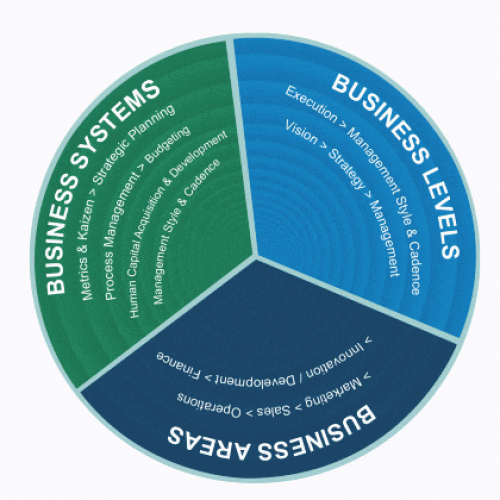“The goal as a company is to have customer service that is not just the best but legendary.” – Sam Walton
I can’t be the only CEO in the world who would look for daily, weekly, and/or monthly “flash reports” showing exactly what was happening to our customers that we thrust off on another vendor before they could begin paying us for our services?! Is it even possible that there are significant businesses out there who are not watching critical measures of their own success and delivery? I guess no matter how unbelievable it is, it must be happening every day. Is it happening in your business without your knowledge?
Sure, these things can happen occasionally, and at good companies, the customer gets an apology, a free month, and/or a bowl of fruit for their trouble. However, the very fact that these things are happening on most transactions with companies tells me management is losing touch with some basic principles.
I challenge any manager to make sure they use their own service anonymously on a regular basis (secret shopper) to experience what they have created. My guess is you will be shocked at the many layers of problems you will encounter created by automated attendants that route people in circles, poorly trained customer reps, badly designed policies, and procedures that have somehow gotten out of step with the current world.
After all, this is not brain surgery, but it does require a lot of blocking and tackling on a regular basis. This is basic execution and requires a certain personality type, sometimes called a “beaver,” who does not get bored or require constant new challenges. It is a fact that it is almost always cheaper to do “it” right than wrong, as errors are what drive up the expense. If issues do not show in the actual customer service costs right away, they will become apparent in customer attrition sooner or later, costing far more than.
Here is a simple list of things to do to improve your company’s customer service, which after all will ultimately define your company’s destiny, for we are all literally nothing without happy customers. I guarantee doing these things will actually cut costs and increase revenue and profits.
Top 8 Ways To Improve Your Customer Service
1. Call your own CSRs anonymously and regularly with non-standard requests to see how they react and handle it. Benchmark their attitude, hold times, and other key metrics on these sample calls. Outsourcing this function is never as good because qualitative data is lost, and the outside company cannot know your business well enough to make as many improvements in the process as you can. It takes some discipline, but it will pay big dividends. This is best assigned on a rotating basis to managers and executive-level people, with the goal of a new round of improvement with each cycle. If you are not finding ways to improve each cycle through this process, you are not doing a sufficiently good job and need to dig deeper. Like jury duty, there should be maybe a one-time excuse to skip it due to a busy schedule, but then no excuse is acceptable the second time around. Nothing is more important than customer service.
Learn more about our Growth and Scaling (GSP) Certification program for managers by clicking here
2. Define a “flash report” that is distributed daily to key management team members. Color code or highlight problem areas, so it can be scanned easily and does not become a burden. Define acceptable ranges and goals for improvement for each number. To be treated seriously, people need to know that management is REALLY reading it daily, so feedback and questions are critical. It should contain the top 10-20 metrics that prove for certain you are doing a good job with customers. It can not be activities only but must measure and should succeed. It probably cannot be designed solely by the customer service people, as they will want to include metrics that are easy to make and hide behind. The CEO would be the best designer of this and should want to define what success is for the CS team.
3. The head of customer service should have a formal meeting monthly to review the results and trends for that month with all supervisors. Senior CSRs should be allowed to represent their perspective and elaborate on why a problem happened to get to the root issues. There should be a case study of a “new” issue that is passed down through the ranks, as everyone should learn the right way to handle it. The CEO or VP should show up sometimes, even in larger companies, so that people know this is a priority, not just jawboning, and so that sufficient resources can be allocated to correct issues and create feedback into other departments.
4. Ongoing training is essential! Data captured from all reports and meetings should be used as feedback into the training system. Monthly meetings with every single CSR to review the biggest issues of the month are crucial to sending the right message about how important this is and keeping CSRs current. Sometimes this can be a very positive experience, as CSRs get to present a tough problem they solved and how they solved it as an example of best practices.
5. Automated attendants must be monitored closely and tested. Always allow people to get to a human being by pushing “0” at any time. Automated attendants are rarely programmed well. They almost always have ways to get stuck in loops, and some people hate them. They are designed to route problems to the right person, not solve them! There will always be problems that do not fit into the standard description, and these people need to get through to the best CSRs, not fall between the cracks.
6. Always have minimum performance standards for all key tasks. This applies to both field and office personnel. People who cannot meet these minimums should be warned and retrained by the top people by tagging along with them. Then they must be replaced if they cannot get up to standard. You are doing them a favor, as they would be better off doing a good job somewhere else than a lousy job there. Anything else would send the wrong message to the good employees.
7. Attitude towards customers is key. Southwest Airlines has kicked butt on larger rivals, mainly due to their ability to hire friendly people who want to do a good job! Do your employees look at customers as the problem, not the source of their paychecks? The correct attitude must be protected by all senior management at all times. Sure, there can be an occasional joke about a real-issue customer you want to fire, but constantly discussing customers negatively is not acceptable and can even begin a long, slow death spiral for a company. Nip that attitude in the bud right away.
8. Have procedures and systems to accelerate repeating issues to a higher level of service. This activity should be tracked on the flash report as a percentage of total calls, with a goal of always improving the ratio regular customer service completes successfully through improved training and case review. These should be your best customer service people and field people. Have a priority system that always gets the toughest and rare problems to your top people quickly, not after the customer is screaming.
You don’t need a Ph.D. to solve these problems; just have a strong customer service focus, a good attitude, and strong attention to detail. With the right cycle repeated each quarter or month, customer service will improve radically with just these simple steps. In the end, they will not cost money either, for they will drive revenue higher than customer attrition declines, and new word of mouth generates new business.
This stuff needs to be ingrained in the corporate culture, so get going today because I guarantee this is costing you many, many customers you do not even know about.
Bob Norton is a long-time serial entrepreneur, CEO, and investor who founded six companies with four exits that returned over $1 billion to investors for a 25X ROI. Two others are still in development. He has trained, consulted, and advised thousands of entrepreneurs, CEOs, and boards since 2002. ™. Mr. Norton works with companies to 2X to 10X growth rates and valuation using AirTight ManagementTM, the world’s most comprehensive Leadership Operating SystemTM. He also helps companies raise capital to fund growth. He is also the Founder of The CEO Boot CampTM and Entrepreneurship University for early-stage companies that have not reached product-market fit and $1M ARR.
What can we help you with today? Scaling, training, consulting, coaching?
Call (619) SCALE06 or (619) 722-5306 9am-6pm CT
Or schedulea free 30-minute strategy session by clicking here.













